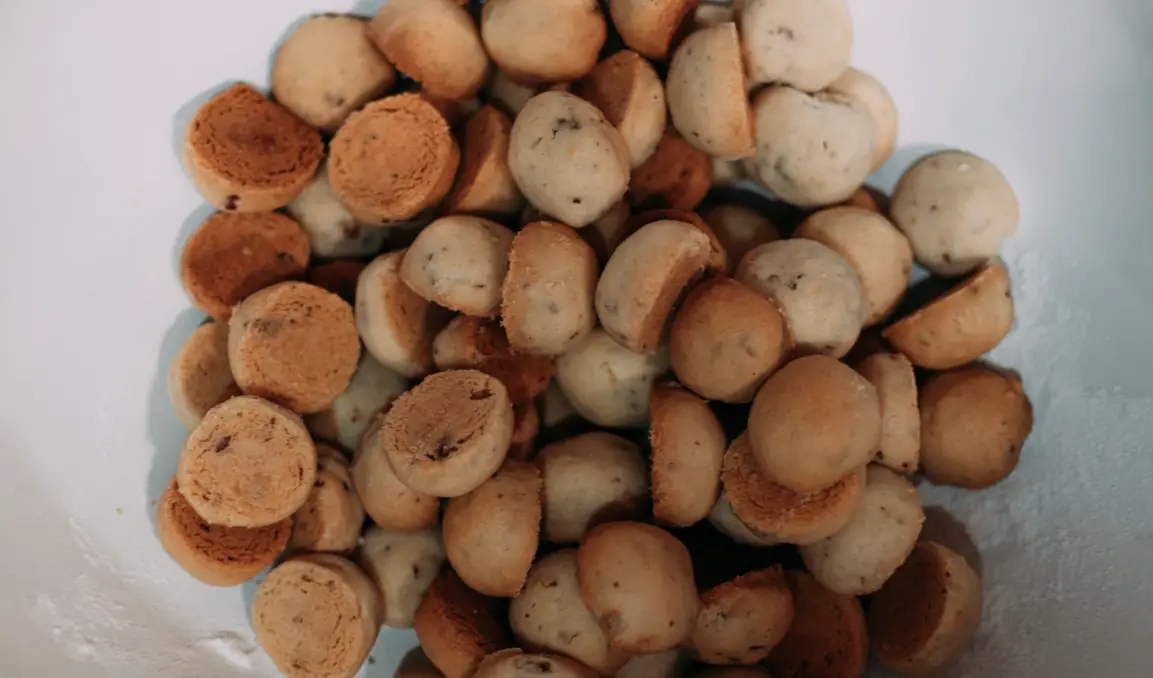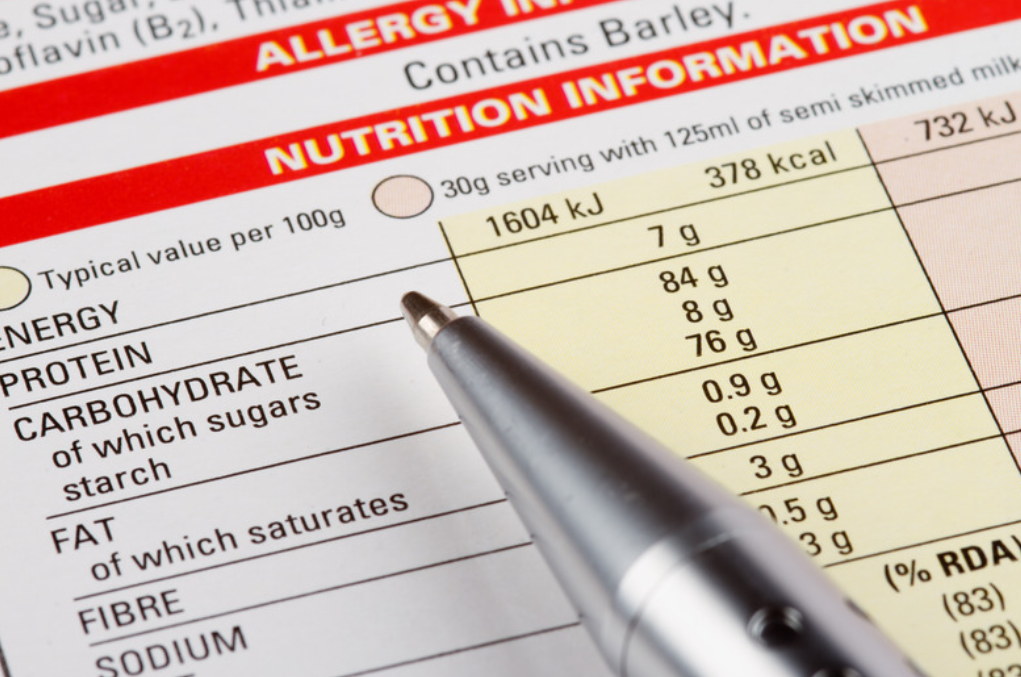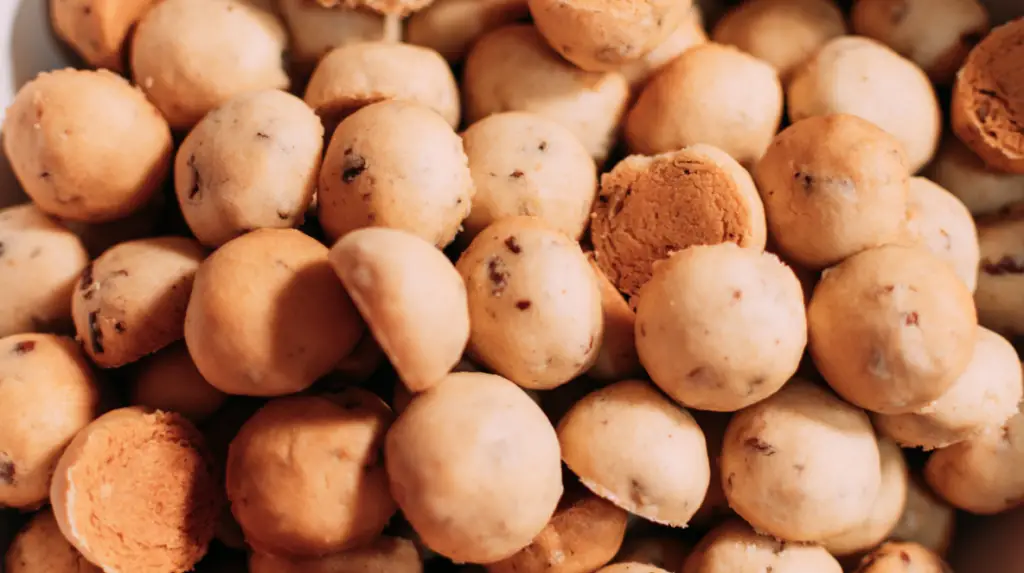Danish wedding cookies, a name that evokes images of joyous celebrations and sweet, buttery delights. These cookies are not just a treat; they’re a cultural emblem, cherished in Denmark and adored globally. Their delicate texture, dusted with snowy powdered sugar, makes them a staple at weddings, Christmas, and indeed, any occasion calling for a touch of sweetness.
In this comprehensive guide, we’ll embark on a culinary journey, exploring the rich history, traditional recipes, and the cultural significance of these beloved cookies. Whether you’re a seasoned baker or a curious food enthusiast, this article promises to unfold the secrets of Danish wedding cookies, guiding you to recreate this Scandinavian marvel in your own kitchen.
History and Origin of Danish Wedding Cookies
The Danish Legacy
The story of Danish wedding cookies begins in the quaint kitchens of Denmark. Known locally as ‘kringle’ or butter cookies, these treats have been a part of Danish baking traditions for centuries. Originally, they were reserved for the most special occasions, symbolizing love, union, and celebration.
A Journey Through Time
Over the years, these cookies have transcended their humble beginnings. From royal weddings to Christmas feasts, their presence became a hallmark of Danish festivities. The recipe, passed down through generations, has remained largely unchanged, a testament to its timeless appeal.
Global Footprints
As Danish culture spread across the globe, so did the love for these cookies. Each region added its unique twist, yet the essence remained intact – a buttery, crumbly cookie, melting in the mouth, leaving a sweet, lingering taste.
The Wedding Connection
In Denmark, weddings are incomplete without these cookies. They are often intricately decorated and served as a symbol of the sweet journey ahead for the newlyweds. This tradition, steeped in love and good wishes, is perhaps what gives these cookies their name and endearing place in Danish weddings.
Traditional Ingredients and Variations
The Essence of Simplicity
At the heart of Danish wedding cookies are simple, wholesome ingredients. The classic recipe calls for all-purpose flour, unsalted butter, powdered sugar, and often, ground nuts like almonds or pecans. These ingredients blend together to create a cookie that’s rich yet delicate, with a melt-in-your-mouth texture that’s simply irresistible.
Nutty Variations
While almonds and pecans are traditional, bakers around the world have experimented with various nuts. Walnuts, hazelnuts, or even a mix can add a unique twist to the flavor profile. Each nut brings its own character, making the cookies versatile and ever-surprising.
Modern Twists
In contemporary kitchens, these cookies have seen innovative adaptations. From the addition of chocolate chips to a hint of cinnamon or vanilla, these modern variations cater to diverse palates while honoring the cookie’s traditional roots.
Step-by-Step Baking Guide

Ingredients
- 1 cup unsalted butter, room temperature
- ½ cup powdered sugar, plus more for coating
- 2 cups all-purpose flour
- 1 teaspoon vanilla extract
- Optional: ½ cup chopped nuts (pecans, almonds, or walnuts)
Instructions
1: Preparing the Dough
- Creaming Butter and Sugar: In a large bowl, beat the butter and ½ cup powdered sugar until light and fluffy. This step is crucial for achieving the melt-in-your-mouth texture.
- Adding Vanilla Extract: Mix in the vanilla extract for flavor.
- Incorporating Flour: Gradually add the flour, mixing until just combined. Overmixing can lead to tough cookies.
- Optional Nuts: If using, gently fold in the chopped nuts.
2: Shaping and Chilling
- Forming Cookies: Roll the dough into small balls, about 1 inch in diameter. Place them on a baking sheet lined with parchment paper.
- Chilling: Chill the cookies in the refrigerator for at least 30 minutes. This helps them hold their shape while baking.
3: Baking
- Preheat Oven: Preheat your oven to 350°F (175°C).
- Baking Time: Bake the cookies for 12-15 minutes, or until they are just starting to turn golden.
- Cooling: Allow the cookies to cool slightly on the baking sheet.
4: Final Touch
- Coating with Powdered Sugar: While still warm, gently roll the cookies in additional powdered sugar. This gives them their characteristic snowy appearance.
Tips for Perfect Texture and Flavor
- Room Temperature Butter: Ensure your butter is at room temperature for easy creaming.
- Don’t Overbake: Keep an eye on the cookies as they bake. Overbaking can lead to hard cookies.
- Sift the Flour: Sifting the flour prevents lumps and ensures a smooth dough.
Common Mistakes to Avoid
- Avoid Overmixing the Dough: Overmixing can develop the gluten in the flour, leading to tough cookies.
- Proper Measuring of Ingredients: Inaccurate measurements can affect the texture and taste. Use a kitchen scale for precision.
- Cooling Before Coating: Let the cookies cool slightly before rolling them in powdered sugar. If they’re too hot, the sugar will melt.
This step-by-step guide is designed to help both novice and experienced bakers create perfect Danish wedding cookies, ensuring a delightful treat that’s sure to impress.
Decorating and Serving Ideas
Creative Embellishments
Danish wedding cookies, with their simple elegance, are a canvas for creativity. Here are some ideas to elevate their appearance:
- Chocolate Drizzle: A light drizzle of melted chocolate can add a touch of luxury.
- Nut Topping: Before baking, press a whole nut on top for an extra crunch.
- Colored Sugar: For a festive touch, roll the cookies in colored powdered sugar.
Serving Suggestions
These cookies are versatile in serving:
- Tea Time Delight: Serve them with tea or coffee for a sophisticated snack.
- Dessert Platter: Mix them with other cookies and sweets on a dessert platter for variety.
- Gift of Love: Pack them in decorative boxes as a heartfelt gift for special occasions.
Nutritional Information and Dietary Adaptations

Nutritional Breakdown of Danish Wedding Cookies
- Caloric Content: Danish wedding cookies are rich in calories, primarily due to their high butter and sugar content. Each cookie typically contains a significant amount of calories, making them a treat best enjoyed in moderation.
- Carbohydrates and Sugars: These cookies are high in carbohydrates, mainly from flour and sugar, contributing to their sweet taste.
- Fats: The butter in the cookies accounts for most of their fat content, which adds to the cookies’ rich, crumbly texture.
- Proteins and Fibers: Generally, these cookies have minimal protein and fiber content.
Adapting the Recipe for Dietary Restrictions
- Gluten-Free Version: To make Danish wedding cookies gluten-free, replace the all-purpose flour with a gluten-free flour blend. Ensure that the blend is suitable for baking to maintain the texture of the cookies.
- Vegan Adaptation: For a vegan version, substitute the butter with a plant-based butter alternative. Also, use a vegan-friendly powdered sugar, as some brands of powdered sugar are processed with bone char.
- Reducing Sugar: If you’re looking to reduce the sugar content, consider using a sugar substitute that is suitable for baking. However, this may slightly alter the texture and taste of the cookies.
- Nut-Free Option: For those with nut allergies, simply omit the nuts from the recipe. This will not significantly affect the texture of the cookies, but it will change the flavor profile slightly.
These adaptations allow individuals with specific dietary needs or preferences to enjoy Danish wedding cookies without compromising on taste or texture. Whether you’re gluten-free, vegan, or have other dietary restrictions, these modifications ensure that everyone can indulge in these delightful treats.
Storing and Preservation Tips
Best Practices for Storing Danish Wedding Cookies
- Airtight Containers: The key to preserving the delicate texture of Danish wedding cookies is storing them in airtight containers. This method prevents the cookies from absorbing moisture and odors, ensuring they retain their original flavor and crispness.
- Room Temperature Storage: Store the containers in a cool, dry place, away from direct sunlight. Room temperature is ideal for maintaining the quality of the cookies without altering their texture.
Keeping Them Fresh for Longer Periods
- Avoid Humidity: Humidity can soften these cookies. Ensure they are completely cooled before storing to prevent any condensation inside the container.
- Parchment Paper Separation: If you need to stack the cookies, place a sheet of parchment paper between each layer. This prevents them from sticking together and helps maintain their shape and texture.
Freezing and Reheating Instructions
- Freezing for Longevity: Danish wedding cookies freeze exceptionally well. Place them in a freezer-safe container, separating layers with parchment paper. This method can extend their freshness for up to 3 months.
- Thawing and Serving: When ready to serve, thaw the cookies at room temperature for a few hours. There’s no need to reheat them, as they are meant to be enjoyed at room temperature, ensuring that their signature buttery and crumbly texture is preserved.
These tips will help readers keep their Danish wedding cookies fresh and delicious, whether they’re enjoying them immediately or saving them for a later date.
Cultural Significance and Traditions
Role in Danish Weddings
- A Symbol of Love and Unity: In Danish weddings, these cookies are more than just a dessert; they symbolize the sweetness and richness of married life. Often served as part of the wedding feast or given as favors, they represent the couple’s wishes for a happy, prosperous life together. Similar to Danish wedding cookies, Mamaliga is another example of a dish rich in tradition and innovation. Learn more at RecipeCastle.
Role in Christmas Celebrations
- A Festive Staple: During Christmas, Danish wedding cookies become a staple in households, symbolizing the joy and warmth of the season. Their buttery flavor and delicate texture make them a cherished treat during holiday gatherings. For more on the role of cookies in festive traditions, see Irresistible Danish Wedding Cookies – Emma Duckworth Bakes.
Comparison with Wedding Cookies from Other Cultures
- A Global Tradition with Local Flavors: While Danish wedding cookies are known for their simplicity and buttery taste, wedding cookies in other cultures often have distinct ingredients and meanings. For example, Italian wedding cookies, also known as ‘biscotti’, are almond-flavored and harder in texture. Greek wedding cookies, or ‘kourabiedes’, are rich in almonds and covered in powdered sugar, symbolizing purity and happiness. Discover the variety of wedding cookies around the world at The Facts About The Danish Wedding Cookies – Nordictrans.com.
This section not only highlights the cultural importance of Danish wedding cookies in Denmark but also offers a global perspective on similar traditions, enhancing the article’s depth and appeal to a diverse audience.
FAQs
Q1: Do Danish wedding cookies traditionally include pecans?
- A: While pecans are a common addition in many recipes for Danish wedding cookies, especially in American adaptations, they are not a traditional ingredient in the classic Danish version. The inclusion of pecans or other nuts is more of a regional variation, adding a unique flavor and texture to the cookies.
Q2: Are Danish wedding cookies the same as Italian wedding cookies?
- A: Danish wedding cookies and Italian wedding cookies share similarities in texture and appearance, but they are distinct. Italian wedding cookies, also known as Italian butter cookies or biscotti, often contain almonds and have a slightly different flavor profile. Danish wedding cookies, on the other hand, are known for their buttery taste and may include different types of nuts or no nuts at all.
Q3: What are the essential ingredients for making Danish wedding cookies?
- A: The essential ingredients for traditional Danish wedding cookies are all-purpose flour, unsalted butter, powdered sugar, and often a hint of vanilla extract. Nuts like pecans or almonds can be added, but they are optional.
Q4: Why are Danish wedding cookies popular during the festive season?
- A: Danish wedding cookies are popular during the festive season due to their rich, buttery flavor and delicate texture, making them a luxurious treat. Their ease of preparation and ability to be beautifully decorated also make them a festive favorite for celebrations and as gifts.
Q5: What makes Danish wedding cookies unique in terms of texture and taste?
- A: The unique texture and taste of Danish wedding cookies come from the high butter content, which gives them a melt-in-your-mouth quality. The powdered sugar adds a subtle sweetness without overpowering the buttery flavor. The optional addition of nuts or vanilla enhances their richness and depth of flavor.
These questions and answers provide valuable insights into the recipe and tradition of Danish wedding cookies, addressing common misconceptions and queries. They can be strategically placed in the article to enhance reader engagement and provide comprehensive information about these beloved treats.
Conclusion
In this guide, we’ve journeyed through the delightful world of Danish wedding cookies, uncovering their history, traditional recipes, and cultural significance. From the simple yet elegant ingredients to the joyous celebrations they grace, these cookies are more than just a treat; they’re a symbol of love and festivity. Whether you’re baking them for a special occasion or just a cozy evening at home, remember that each batch carries with it a piece of Danish heritage. Happy baking, and may your cookies always be as sweet as the moments they commemorate!
